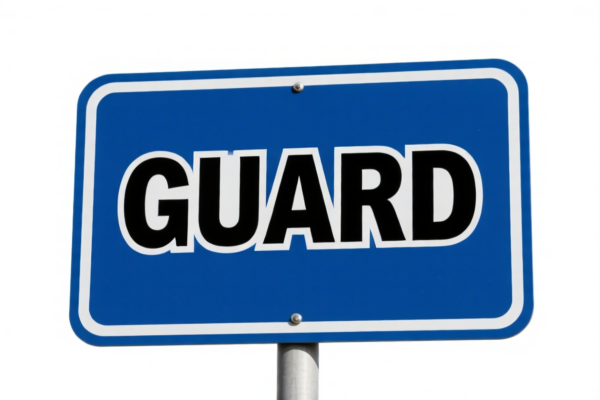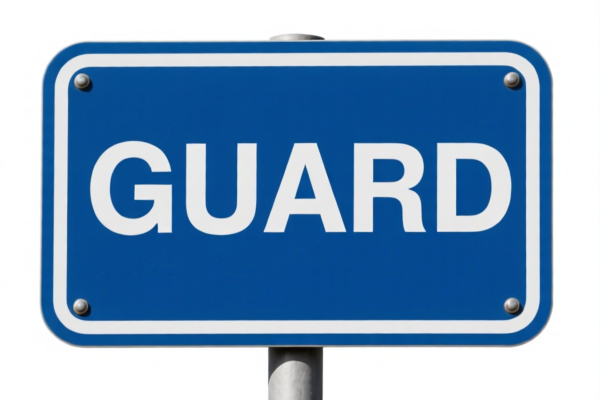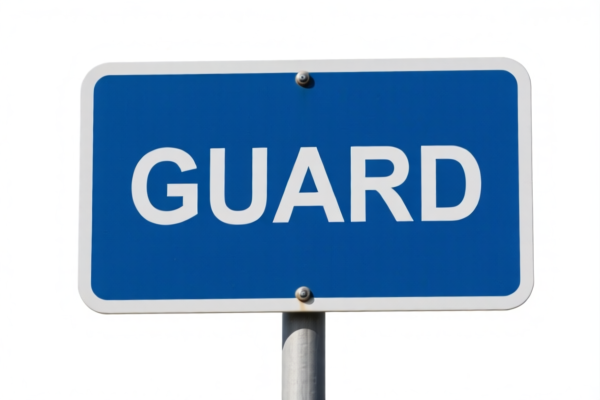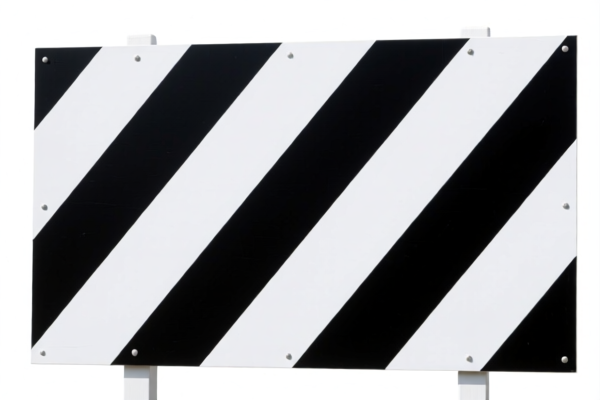| HS Code | Official Doc | Tariff Rate | Origin | Destination | Effective Date |
|---|---|---|---|---|---|
| 9620005000 | Doc | 60.3% | CN | US | 2025-05-12 |
| 9620006500 | Doc | 57.9% | CN | US | 2025-05-12 |
| 3307101000 | Doc | 59.9% | CN | US | 2025-05-12 |
| 3307102000 | Doc | 59.9% | CN | US | 2025-05-12 |




A guard, broadly defined, is a person or thing that protects or defends. The term encompasses a wide range of applications, materials, and functionalities.
Types & Categorization
Guards can be categorized based on their nature and purpose:
1. Human Guards:
- Security Guards: Employed by private or public entities to protect property, personnel, or assets. They often patrol premises, monitor surveillance equipment, control access, and respond to incidents. Variations include:
- Armed Guards: Authorized to carry firearms.
- Unarmed Guards: Rely on observation, communication, and non-physical deterrents.
- Static Guards: Assigned to a fixed post.
- Mobile Guards: Patrol designated areas.
- Bodyguards (Personal Security Detail): Protect individuals from harm, often high-profile figures.
- Lifeguards: Protect swimmers at beaches and pools, providing rescue and first aid.
- Coast Guards: Maritime law enforcement agencies responsible for search and rescue, law enforcement, and protection of waterways.
- Military Guards: Personnel tasked with protecting military installations and assets.
2. Mechanical/Physical Guards:
- Safety Guards (Machinery): Devices designed to prevent contact with hazardous parts of machinery. Common types include:
- Fixed Guards: Permanently attached barriers.
- Interlocked Guards: Shut down machinery when opened.
- Adjustable Guards: Allow access for maintenance while providing protection during operation.
- Light Curtains/Area Scanners: Use sensors to detect intrusions and halt operation.
- Protective Barriers: Physical structures used to prevent access or impact. Examples include:
- Fences: Define boundaries and deter entry.
- Railings: Prevent falls.
- Bumpers: Protect objects from impact.
- Shields: Deflect projectiles or impacts.
- Vehicle Guards: Protective additions to vehicles.
- Brush Guards: Protect the front of vehicles from obstacles.
- Grille Guards: Protect the radiator and engine.
- Door Guards: Mechanisms to secure doors.
- Deadbolts: Provide strong locking security.
- Security Bars: Reinforce doors against forced entry.
3. Digital/Software Guards:
- Firewalls: Network security systems that control incoming and outgoing network traffic.
- Antivirus Software: Detects and removes malicious software.
- Intrusion Detection Systems: Monitor network activity for suspicious behavior.
- Access Control Systems: Restrict access to computer systems and data.
- Data Encryption: Protects sensitive information from unauthorized access.
Materials
The materials used in guard construction vary widely depending on the application:
- Metals: Steel, aluminum, iron (for strength and durability in physical guards).
- Plastics: Polycarbonate, acrylic (for visibility and impact resistance).
- Wood: (for decorative or less critical physical barriers).
- Composites: Carbon fiber, fiberglass (for lightweight strength).
- Electronic Components: Sensors, microchips, processors (for digital guards).
- Fabrics: Kevlar, ballistic nylon (for protective clothing).
Function
The core function of a guard is protection. This can manifest in several ways:
- Deterrence: Discouraging unwanted access or activity.
- Detection: Identifying potential threats.
- Prevention: Stopping threats from causing harm.
- Response: Reacting to threats to mitigate damage.
- Containment: Limiting the spread of harm.
Usage Scenarios
- Security: Protecting buildings, assets, and people from theft, vandalism, or attack.
- Safety: Preventing accidents and injuries in industrial settings.
- Personal Protection: Safeguarding individuals from harm.
- Maritime Safety: Ensuring the safety of waterways and vessels.
- Cybersecurity: Protecting computer systems and data from cyber threats.
- Transportation: Protecting vehicles and their occupants.
Based on the provided reference material, the HS code options related to 'guard' are limited, with only the following 3 found.
-
9620005000: This HS code falls under Chapter 96, which covers miscellaneous manufactured articles. Specifically, it covers monopods, bipods, tripods and similar articles, other than those of iron or steel, and made of plastics. The tax rate details indicate a base tariff of 5.3%, a surcharge of 25.0%, and a surcharge of 30% after April 2, 2025, resulting in a total tariff of 60.3%. This could apply if the 'guard' is a plastic protective device resembling a tripod or similar structure.
-
9620006500: This HS code also falls under Chapter 96, covering miscellaneous manufactured articles. It specifically covers monopods, bipods, tripods and similar articles, other than those of iron or steel, and made of iron or steel. The tax rate details indicate a base tariff of 2.9%, a surcharge of 25.0%, and a surcharge of 30% after April 2, 2025, resulting in a total tariff of 57.9%. This could apply if the 'guard' is a metal protective device resembling a tripod or similar structure.
-
3307101000: This HS code falls under Chapter 33, which covers essential oils and resinoids, perfumery, cosmetic or toilet preparations. Specifically, it covers pre-shave, shaving or after-shave preparations, personal deodorants, bath preparations, depilatories and other perfumery, cosmetic or toilet preparations, not elsewhere specified or included; prepared room deodorizers, whether or not perfumed or having disinfectant properties, and specifically pre-shave, shaving or after-shave preparations: Not containing alcohol. The tax rate details indicate a base tariff of 4.9%, a surcharge of 25.0%, and a surcharge of 30% after April 2, 2025, resulting in a total tariff of 59.9%. This could apply if the 'guard' refers to a shaving preparation.
Customer Reviews
No reviews yet.